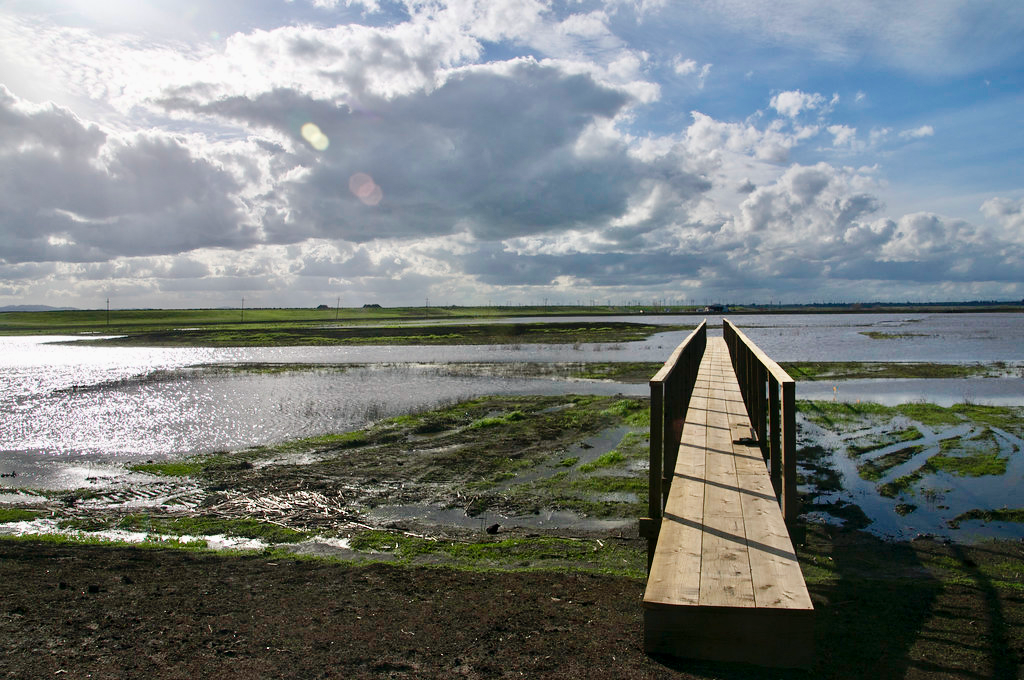As global warming leads to rising sea levels, ecosystems undergo changes. A potential positive aspect, according to scientists, is that tidal wetlands in estuaries may generate reduced amounts of methane, a potent greenhouse gas. This occurs as the heightened inflow of seawater renders these habitats less conducive to methane-producing microbes.
 One of the wetland sites in the San Francisco Bay Area studied by Tringe and her colleagues. Image Credit: DOE Joint Genome Institute
One of the wetland sites in the San Francisco Bay Area studied by Tringe and her colleagues. Image Credit: DOE Joint Genome Institute
Yet, findings from biologists at Lawrence Berkeley National Laboratory (Berkeley Lab) and UC Berkeley challenge these assumptions. Upon scrutinizing the microbial, chemical, and geological aspects of 11 wetland zones, the team discovered that a wetland area exposed to a slight influx of seawater was releasing unexpectedly elevated levels of methane – surpassing those observed in any of the freshwater sites.
The findings suggest that the dynamics governing the storage or emission of greenhouse gases in natural landscapes are more intricate and unpredictable than previously assumed. The study was published in mSystems.
We looked at how many methanogens, the organisms that make methane, are present in soils at these sites and it wasn’t really well correlated with the amount of methane observed. And even if you look at the amount of methanotrophs, organisms that eat methane, in combination with methanogens, that doesn’t seem to fully explain it.
Susannah Tringe, Study Senior Author and Director, Environmental Genomics & Systems Biology Division, Lawrence Berkeley National Laboratory
Tringe and her team extracted soil samples from the 11 sites and employed high-throughput sequencing to analyze DNA from various organisms present, such as bacteria, viruses, and fungi. They scrutinized the genes present in the sequences, mapping them to recognized functions.
For instance, they identified genes involved in nitrogen metabolism or genes from bacteria utilizing sulfate in respiration. Subsequently, they modeled how the genetic information, combined with chemical factors in the soil and water, could contribute to the observed methane emissions.
Across most sites, spanning from freshwater to full seawater salinities, the quantity of emitted methane exhibited an inverse relationship with the inflow of salt water mingling with river water. However, at one site, restored in 2010 from a seasonal grassy pasture for livestock grazing back to its original wetland habitat, the team observed elevated methane emissions despite a moderate influx of salt water.
The higher sulfate content (an ion containing sulfur and oxygen) in seawater compared to freshwater led to the expectation that a heightened influx of seawater in these environments would result in decreased methane production. This is because methanogens, which utilize CO2 for cellular energy production, are anticipated to be outcompeted by bacteria utilizing sulfate instead.
Ultimately, we found that there were significant influences from other bacterial groups like the ones that break down carbon and even organisms that are better known as nitrogen cyclers, and we couldn’t readily explain the methane emissions by something as simple as, for example, how much sulfate is available or how many methanogens are there.
Susannah Tringe, Study Senior Author and Director, Environmental Genomics & Systems Biology Division, Lawrence Berkeley National Laboratory
In ecology, it is widely believed that restoring habitats to their native state can enhance carbon storage, enhance water quality, and bolster wildlife populations. Over the recent decades, wetlands have gained increased recognition as crucial ecosystems for providing these environmental services. Consequently, there have been widespread initiatives to restore ecosystems by eliminating barriers, reducing pollution, and removing non-native organisms.
Dennis D. Baldocchi, Executive Associate Dean and Biometeorology Professor at UC Berkeley and a co-author, has conducted modeling work indicating that, despite the current contribution of greenhouse gases to the atmosphere by the restored wetland, the ecosystem is expected to stabilize and transition into a net carbon sink within 100 to 150 years.
This timeframe may not align with the expectations of stakeholders who aimed for carbon sequestration when restoring the area.
“We want to know if these systems will act as long-term carbon sinks. And these microbiological investigations can help refine our models and predictions,” stated Baldocchi.
Tringe pointed out that other laboratories have documented heightened methane production in wetland soils with increased salinity. Researchers from Duke University extracted soil core samples from a coastal freshwater wetland and subjected them to artificial seawater, with and without sulfate.
In both scenarios, methane production increased. Tringe's laboratory recently partnered with Marcelo Ardón of North Carolina State University to examine the microbial communities in those soils.
There was this expectation that sulfate would be the most important thing. And in those studies, not only did salt water stimulate methane production, which again is kind of counter to the dogma that sulfate is important, it happened whether you had sulfate there or not; in fact the sulfate didn’t have a big effect on the methane emissions.
Susannah Tringe, Study Senior Author and Director, Environmental Genomics & Systems Biology Division, Lawrence Berkeley National Laboratory
Tringe adds, “So I think these experimental manipulations are reconfirming the story that there’s more nuanced effects of seawater intrusion than just a sulfate addition, and also more nuanced factors behind ecosystem restoration.”
The research was funded by the Department of Energy (DOE) Early Career Research Program award to Tringe and the DOE Joint Genome Institute.
Journal Reference:
Hartman, W. H., et al. (2024). Multiple microbial guilds mediate soil methane cycling along a wetland salinity gradient. mSystems. doi.org/10.1128/msystems.00936-23.